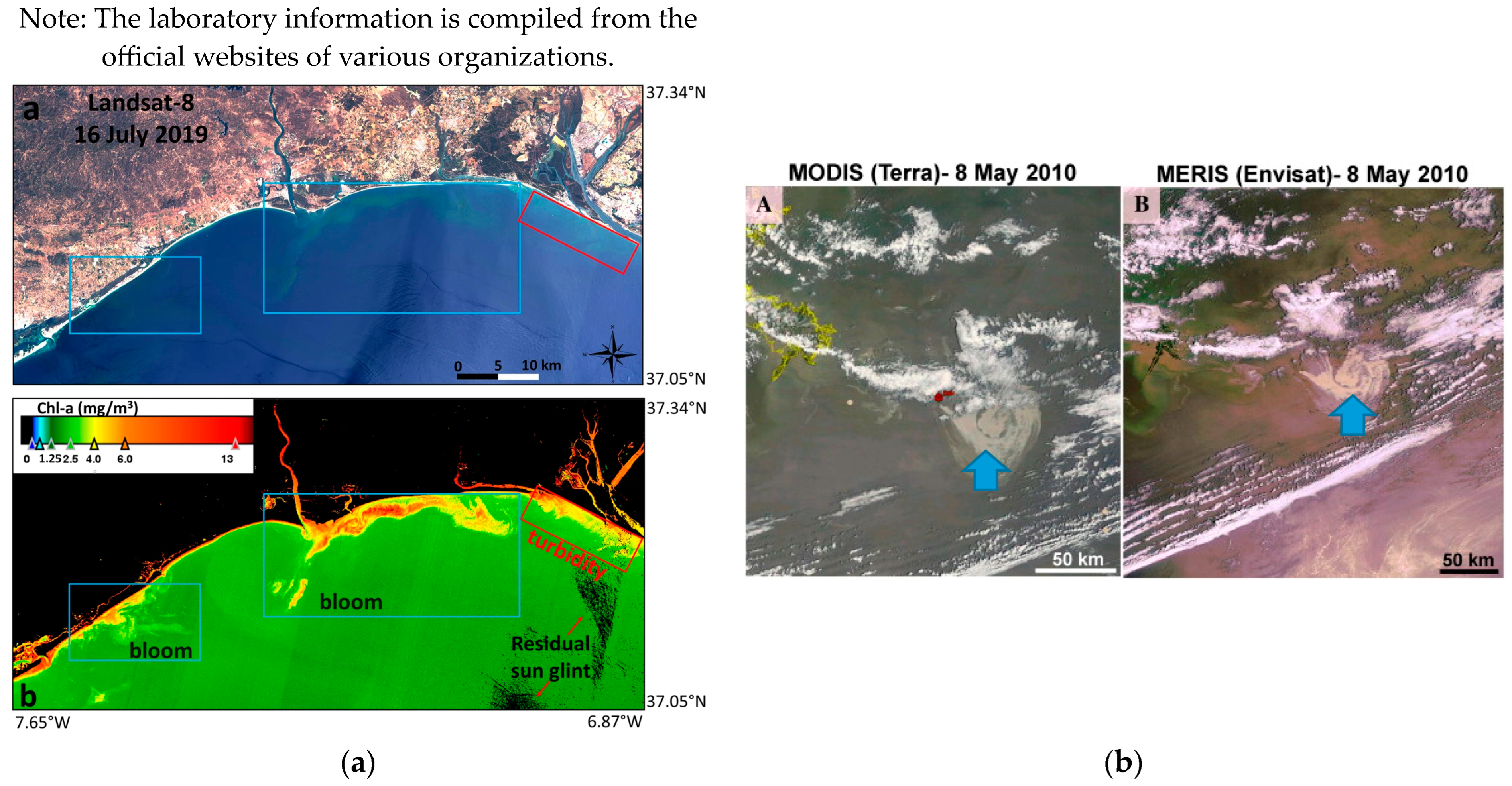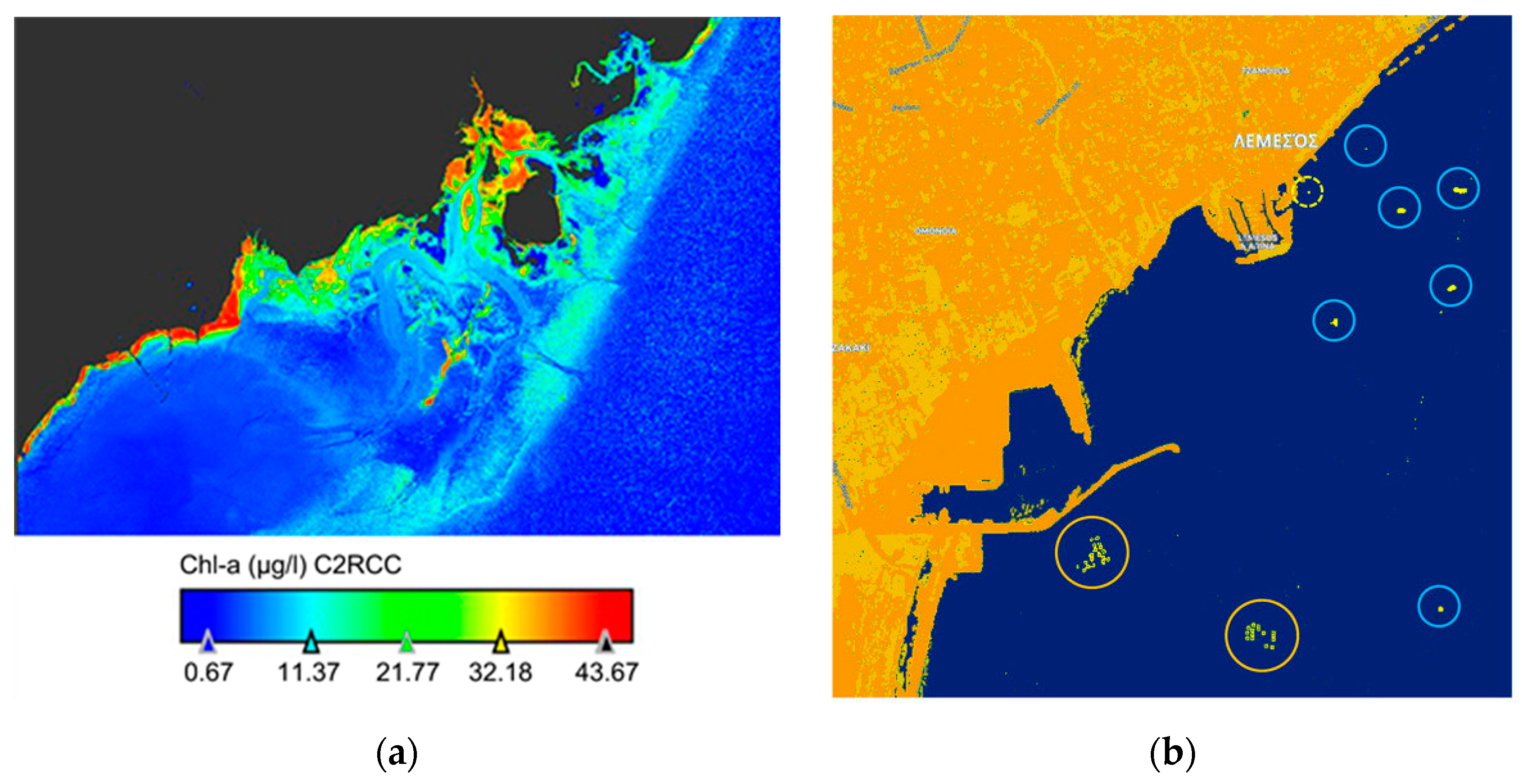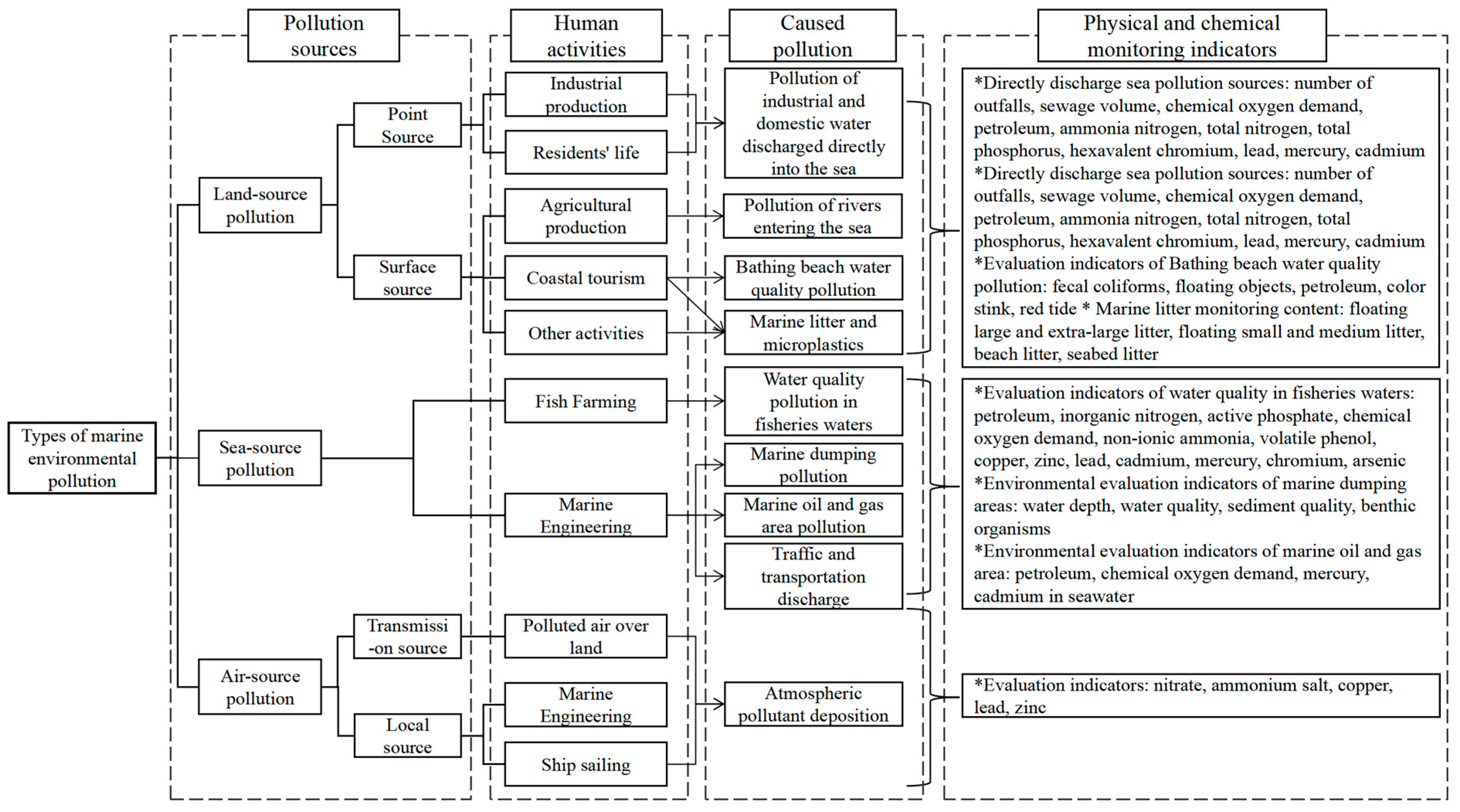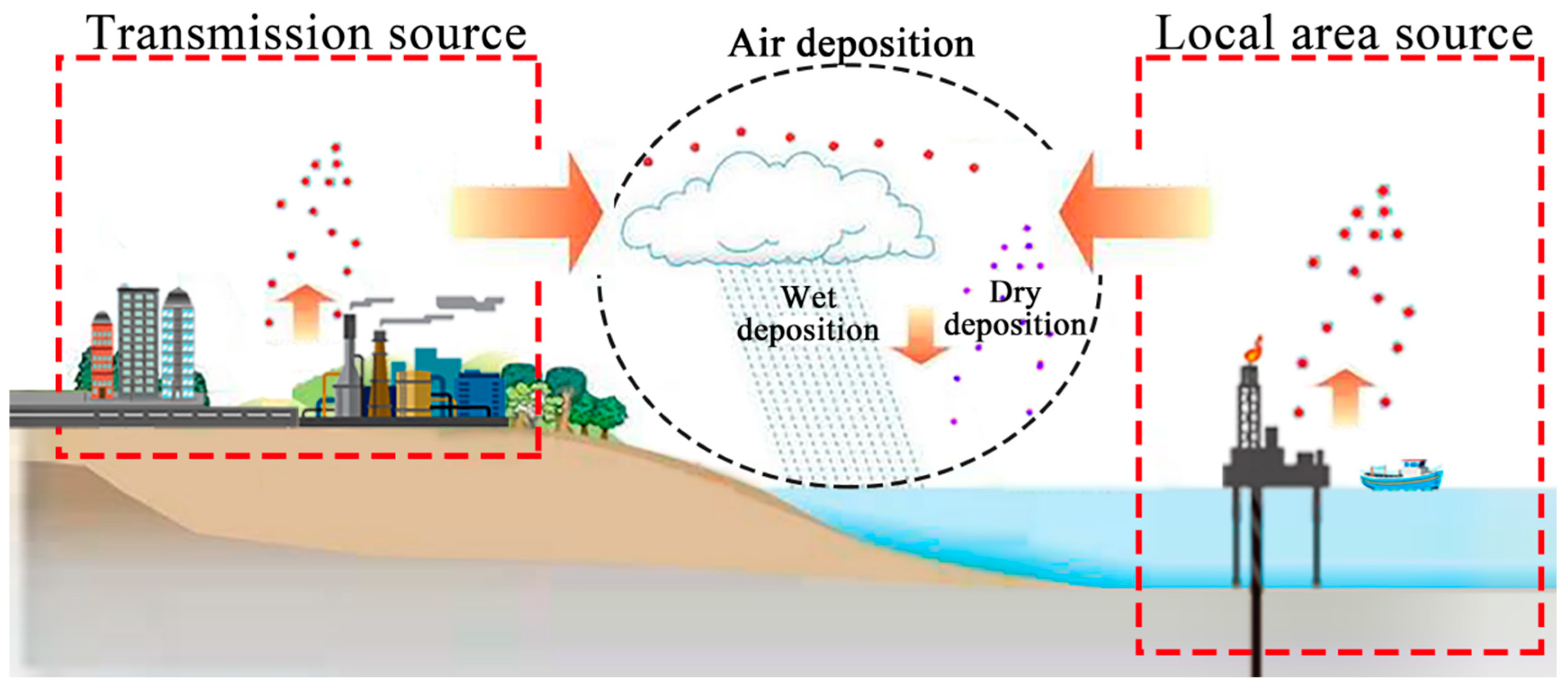
| Version | Summary | Created by | Modification | Content Size | Created at | Operation |
|---|---|---|---|---|---|---|
| 1 | Renfeng MA | -- | 2821 | 2023-11-06 10:47:30 | | | |
| 2 | Peter Tang | Meta information modification | 2821 | 2023-11-07 04:54:54 | | |
Video Upload Options
With the rapid development of urbanization and industrialization, human activities have caused marine pollution in three ways: land source, air source, and sea source, leading to the problem of marine environments. Remote sensing, with its wide coverage and fast and accurate monitoring capability, continues to be an important tool for marine environment monitoring and evaluation research.
1. Introduction

|
Research Institute |
Number of Paper |
Country/ Region |
Related Laboratory |
Research Direction |
|---|---|---|---|---|
|
National Aeronautics and Space Administration |
1506 |
United States |
/ |
Sea level rise monitoring; Marine ecosystem research; Marine currents motion research |
|
National Oceanic and Atmospheric Administration |
1276 |
United States |
Pacific Marine Environment Laboratory |
Climate-weather research; Marine ecosystem research; Ocean and coastal evolution research |
|
Global Monitoring Laboratory |
Greenhouse gases and carbon cycle research; Changes in clouds, aerosols and surface radiation research; Recovery of stratospheric ozone research |
|||
|
Chinese Academy of Sciences |
1028 |
China |
Digital Earth Key Laboratory |
Frontier theory and technology of earth observation research; Earth big data science and methods research; Digital earth science and platform research; Global environmental resources spatial information system research |
|
Key Laboratory of Infrared Detection and Imaging Technology |
High-resolution infrared imaging technology research; Hyperspectral imaging technology research; Weak target detection technology research; High quantitative remote sensing detection technology research |
|||
|
California Institute of Technology |
853 |
United States |
Linde Center |
Earth climate change research [14]; Pollution impact research; Carbon dioxide changes research |
|
University of Washington |
617 |
United States |
Applied Physics Laboratory- Air-sea interaction and remote sensing |
Sea-air exchange research; Coastal research; Sensor research; Wave research |
|
University of Maryland |
576 |
United States |
Earth System Science Interdisciplinary Center (cooperation with NASA) |
Climate variability and change research; Atmospheric composition and processes research; Global carbon cycle research; Global water cycle research |
|
University of California, San Diego |
546 |
United States |
Scripps Institution of Oceanography |
Collect and process data on the Earth, oceans and atmosphere by cameras, lasers and various electromagnetic sensors |
|
University of Colorado |
476 |
United States |
Mortenson Center in Global Engineering |
Sustainable water treatment system research; Field and remote sensing research; Infrastructure resilience and disaster recovery research |
|
Earth Science and Observation Center, Institute for Research in Environmental Sciences |
Analysis of remote sensing data, validation of data |
|||
|
University of Miami |
445 |
United States |
Upper Ocean Dynamics Laboratory |
Experimental studies on coastal circulation processes and ocean-atmosphere interactions during the hurricane |
|
Woods Hole Oceanographic Institution |
385 |
United States |
Claisen Laboratory |
Studies on air-sea interactions and their impact on weather and climate through a wide range of measured and remote sensing data |


2. Sources and Monitoring Indices of Marine Pollution


3. The Utilization of Remote Sensing Monitoring in Marine Pollution
3.1. An Overview of the Development History and Present Situation

3.2. The Monitoring Data and Methods
References
- Sankar, T.K.; Kumar, A.; Mahto, D.K.; Das, K.C.; Narayan, P.; Fukate, M.; Awachat, P.; Padghan, D.; Mohammad, F.; Al-Lohedan, H.A.; et al. The Health Risk and Source Assessment of Polycyclic Aromatic Hydrocarbons (PAHs) in the Soil of Industrial Cities in India. Toxics 2023, 11, 515.
- Meshram, S.G.; Kahya, E.; Meshram, C.; Ghorbani, M.A.; Ambade, B.; Mirabbasi, R. Long-term temperature trend analysis associated with agriculture crops. Theor. Appl. Clim. 2020, 140, 1139–1159.
- Henrique, M.P.; Paul, W.L.; Vânia, P.; Rob, A.; Jörn, P.W.S.; Juan, J.F.M.; Araújo, M.B.; Patricia, B.; Reinette, B.; William, W.L.C.; et al. Scenarios for global biodiversity in the 21st century. Science 2010, 330, 1496–1501.
- Ma, R.F.; Dou, S.M.; Gong, H.B. China’s East China Sea Sustainable Development Study: A Volume on Cross-Regional Governance of Coastal Zone Ecology and Environment; Ocean Press: Beijing, China, 2019.
- Sala, E.; Knowlton, N. Global Marine Biodiversity Trends. Annu. Rev. Environ. Resour. 2006, 31, 93–122.
- Lin, M.S.; Zhang, Y.G.; Yuan, X.Z. The development course and trend of ocean remote sensing satellite. Acta Oceanol. Sin. 2015, 37, 1–10.
- Sun, F.Z. Remote Sensing Assessment of Coastal Zones; Science Press: Beijing, China, 2015.
- Zou, B.; Lin, M.S.; Shi, L.J.; Zou, Y.R.; Jia, Y.J.; Zeng, T. Application of Remote Sensing Technology in Ocean Disaster. City Disaster Reduct. 2018, 123, 61–65.
- Eck, T.F.; Holben, B.N.; Kim, J.; Beyersdorf, A.J.; Choi, M.; Lee, S.; Koo, J.-H.; Giles, D.M.; Schafer, J.S.; Sinyuk, A.; et al. Influence of cloud, fog, and high relative humidity during pollution transport events in South Korea: Aerosol properties and PM2.5 variability. Atmos. Environ. 2020, 232, 117530.
- Fichot, C.G.; Tzortziou, M.; Mannino, A. Remote sensing of dissolved organic carbon (DOC) stocks, fluxes and transformations along the land-ocean aquatic continuum: Advances, challenges, and opportunities. Earth-Sci. Rev. 2023, 242, 104446.
- Leifer, I.; Lehr, W.J.; Simecek-Beatty, D.; Bradley, E.; Clark, R.; Dennison, P.; Hu, Y.; Matheson, S.; Jones, C.E.; Holt, B.; et al. State of the art satellite and airborne marine oil spill remote sensing: Application to the BP Deepwater Horizon oil spill. Remote Sens. Environ. 2012, 124, 185–209.
- Mace, T.H. At-sea detection of marine debris: Overview of technologies, processes, issues, and options. Mar. Pollut. Bull. 2012, 65, 23–27.
- Moreno-Madriñán, M.J.; Rickman, D.L.; Ogashawara, I.; Irwin, D.E.; Ye, J.; Al-Hamdan, M.Z. Using remote sensing to monitor the influence of river discharge on watershed outlets and adjacent coral Reefs: Magdalena River and Rosario Is-lands, Colombia. Int. J. Appl. Earth Obs. Geoinf. 2015, 38, 204–215.
- Nellemann, C.; Hain, S.; Alde, R.J. Dead Water: Merging of Climate Change with Pollution, Over-Harvest, and Infestations in the World’s Fishing Grounds; United Nations Environment Programme: Arendal, Norway, 2008.
- Caballero, I.; Fernández, R.; Escalante, O.M.; Mamán, L.; Navarro, G. New capabilities of Sentinel-2A/B satellites com-bined with in situ data for monitoring small harmful algal blooms in complex coastal waters. Sci. Rep. 2020, 10, 8743.
- Shamsudeen, T.Y. Advances in remote sensing technology, machine learning and deep learning for marine oil spill de-tection, prediction and vulnerability assessment. Remote Sens. 2020, 12, 3416.
- Katlane, R.; Dupouy, C.; El Kilani, B.; Berges, J.C. Estimation of Chlorophyll and Turbidity Using Sentinel 2A and EO1 Data in Kneiss Archipelago Gulf of Gabes, Tunisia. Int. J. Geosci. 2020, 11, 708–728.
- Themistocleous, K.; Papoutsa, C.; Michaelides, S.; Hadjimitsis, D. Investigating Detection of Floating Plastic Litter from Space Using Sentinel-2 Imagery. Remote Sens. 2020, 12, 2648.
- Ambade, B.; Sethi, S.S.; Chintalacheruvu, M.R. Distribution, risk assessment, and source apportionment of polycyclic aromatic hydrocarbons (PAHs) using positive matrix factorization (PMF) in urban soils of East India. Environ. Geochem. Health 2022, 45, 491–505.
- Liu, H.L.; Nie, H.T.; Wang, Y.L.; Sun, X.; Wei, H. Estimation method of pollutant load into sea using statistical data—Tianjin city. Mar. Environ. Sci. 2019, 38, 968–976.
- Kurwadkar, S.; Sankar, T.K.; Kumar, A.; Ambade, B.; Gautam, S.; Gautam, A.S.; Biswas, J.K.; Salam, M.A. Emissions of black carbon and polycyclic aromatic hydrocarbons: Potential implications of cultural practices during the Covid-19 pandemic. Gondwana Res. 2023, 114, 4–14.
- Ge, H.Q.; Lan, N. Causes and Prevention Mode on Marine Pollution from the Land-based Activities or Sources (MPLBA) in China. China Soft Sci. 2014, 2, 22–31.
- Ma, X.D.; Mu, J.L.; Lin, Z.S.; Wang, L.J.; Yu, L.M.; Wang, Y.; Zhang, Z.; Zhang, Z.F. The Impact of Sewage from Typical Land-based Sources on the Adjacent Marine Eutrophication and Biological Toxicity. Environ. Monitor. China 2014, 30, 25–30.
- Xu, L.H.; Li, J.L.; Li, W.F.; Zhao, S.; Yuan, Q.X.; Wang, M.Y.; Yang, L.; Lu, X.S. Progress in Impact of Human Activities on Coastal Resource and Environment. J. Nanjing Univ. Nat. Sci. Ed. 2014, 37, 124–131.
- Davenport, J.; Davenport, J.L. The impact of tourism and personal leisure transport on coastal environments: A review. Estuar. Coast. Shelf Sci. 2006, 67, 280–292.
- GB 3097-1997; Marine Water Quality Standard. State Environmental Protection Administration: Beijing, China, 1997.
- GB 3838-2002; Environmental Quality Standards for Surface Water. State Environmental Protection Administration (SEPA): Beijing, China; General Administration of Quality Supervision, Inspection and Quarantine (AQSIQ) of the People’s Republic of China: Beijing, China, 2002.
- Chen, Y.B.; Song, G.B.; Zhao, W.X.; Chen, J.W. Estimating pollutant loadings from mariculture in China. Mar. Environ. Sci. 2016, 35, 1–6.
- Liu, J.L.; Chen, X.J. Research Progress and Hotspots of Marine Biodiversity: Based on Bibliometrics and Knowledge Mapping Analysis. Prog. Fish. Sci. 2021, 42, 201–213.
- Wang, C.Y.; He, S.J.; Li, Y.T.; Hou, X.Y.; Yang, C.Y. Study on the state and ecological effect of spilled oil pollution in Chinese Coastal Waters. Mar. Sci. 2009, 33, 57–60.
- GB 11607-1989; Water Quality Standard for Fisheries. State Environmental Protection Administration: Beijing, China, 1989.
- GB/T 17108-2006; Technical Directives for the Division of Marine Functional Zonation. General Administration of Quality Supervision, Inspection and Quarantine (AQSIQ): Beijing, China; Standardization Administration of the People’s Republic of China (SAC): Beijing, China, 2006.
- Kumar, A.; Ambade, B.; Sankar, T.K.; Sethi, S.S.; Kurwadkar, S. Source identification and health risk assessment of atmospheric PM2.5-bound polycyclic aromatic hydrocarbons in Jamshedpur, India. Sustain. Cities Soc. 2019, 52, 101801.
- Ambade, B.; Kumar, A.; Latif, M. Emission sources, Characteristics and risk assessment of particulate bound Polycyclic Aromatic Hydrocarbons (PAHs) from traffic sites. 2021; preprint.
- Lin, M.S.; He, X.Q.; Jia, Y.J.; Bai, Y.; Ye, X.M.; Gong, F. Advances in marine satellite remote sensing technology in China. Acta Oceanol. Sin. 2019, 41, 99–112.
- Wang, W.J.; Jia, D.N.; Xu, J.L.; Chu, H.K.; Dong, X.R. Review of the development of global marine remote sensing satellite. Bull. Surv. Mapp. 2020, 5, 1–6.
- Baig, M.H.A.; Zhang, L.; Shuai, T.; Tong, Q. Derivation of a tasselled cap transformation based on Landsat 8 at-satellite reflectance. Remote Sens. Lett. 2014, 5, 423–431.
- Blix, K.; Pálffy, K.; Tóth, V.R.; Eltoft, T. Remote sensing of water quality parameters over Lake Balaton by using sentinel-3 OLCI. Water 2018, 10, 1428.
- Atlas, R.; Hoffman, R.N.; Ardizzone, J.; Leidner, S.M.; Jusem, J.C.; Smith, D.K.; Gombos, D. A cross-calibrated multi-plat-form ocean surface wind velocity product for meteorological oceanographic applications. Bull. Am. Meteorol. Soc. 2011, 92, 157–174.
- Su, H.; Li, W.; Yan, X. Retrieving temperature anomaly in the global subsurface deeper ocean from satellite observations. J. Geophys. Res. Ocean. 2018, 123, 399–410.
- Sun, W.W.; Yang, G.; Chen, C.; Chang, M.H.; Huang, K.; Meng, X.Z.; Liu, L.Y. Development status literature analysis of China’s earth observation remote sensing satellites. J. Remote Sens. 2020, 24, 479–510.
- Jiang, X.W.; Lin, M.S.; Liu, J.Q.; Zhang, Y.Q.; Xie, X.T.; Peng, H.L.; Zhou, W. The HY-2 satellite its preliminary assessment. Int. J. Digit. Earth 2012, 5, 266–281.
- Zhao, C.; Jia, M.; Wang, Z.; Mao, D.; Wang, Y. Toward a better understanding of coastal salt marsh mapping: A case from China using dual-temporal images. Remote Sens. Environ. 2023, 295, 113664.




